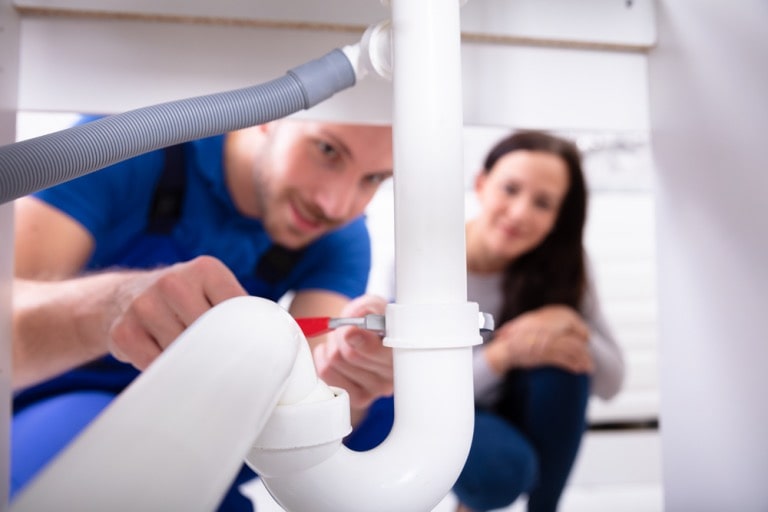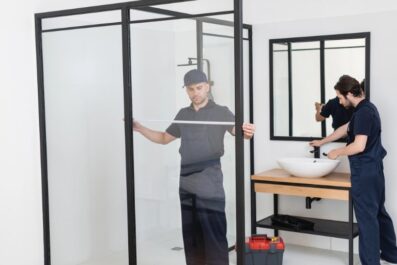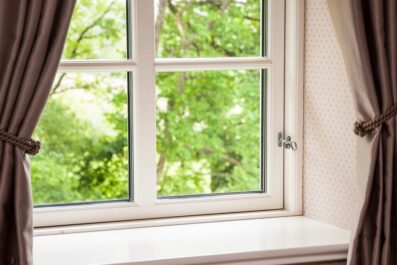Comprehensive Plumbing Guide for New Homeowners

As you settle into your new abode, one aspect you’ll want to familiarize yourself with is the plumbing system. Understanding how your plumbing works and how to perform essential maintenance and repairs can save you time, money, and headaches. Following home plumbing tips may come in handy.
Keeping an eye out for leaky faucets, inspecting pipes for signs of corrosion, and knowing where the main shut-off valve is located are fundamental steps in maintaining your plumbing system. Learning to unclog drains using natural remedies or essential tools can prevent minor issues from escalating into major problems. Feel free to contact a professional plumber for more complex issues or for clarification on tackling a plumbing task yourself.
Understanding Your Plumbing System
Before diving into maintenance and repairs, it’s essential to have a basic understanding of how your plumbing system functions. Your home’s plumbing system consists of a network of pipes, fixtures, and appliances that bring fresh water in and remove wastewater. The main components of your plumbing system include:
- Supply lines: These pipes deliver fresh water from the municipal water supply or well to your home.
- The drain-waste-vent (DWV) system removes wastewater from your home and allows sewer gases to vent safely outside.
- Fixtures: These include sinks, toilets, showers, and tubs where water is used and drained away.
- Appliances: Appliances like water heaters, dishwashers, and washing machines are connected to your plumbing system and require regular maintenance.
Understanding the layout of your plumbing system, including where shut-off valves are located and how water flows through your home, will empower you to tackle minor issues and make informed decisions about maintenance and repairs.
Essential Plumbing Tools Every Homeowner Should Have
Even if you’re not a professional plumber, having a few essential tools on hand can help you tackle minor plumbing repairs and maintenance tasks. Here are some essential tools every homeowner should have in their toolbox:
- Plunger: A plunger is essential for clearing clogged toilets and drains.
- Pipe wrench: This adjustable wrench is used for tightening and loosening pipes and fittings.
- Adjustable wrench: Handy for tightening or loosening nuts and bolts on plumbing fixtures.
- Pipe cutter: When making repairs or installations, use a pipe cutter to cut copper, PVC, or other types of pipes.
- Plumber’s tape: Also known as Teflon tape, this tape is used to create a watertight seal on threaded pipe fittings.
- Drain snake: A drain snake, or an auger, clears stubborn clogs from drains and pipes.
With these essential tools in your arsenal, you’ll be prepared to handle most minor plumbing issues in your home.
Common Plumbing Issues and How to Fix Them
Despite proper preventative maintenance, plumbing problems can still arise. Common issues include blocked drains, leaking taps due to worn-out washers or O-rings, constantly running toilets causing water wastage and higher utility bills, low water pressure due to mineral accumulation in pipes or a malfunctioning pressure regulator, and water heater problems requiring repair or replacement.
To resolve these issues, use a plunger or drain snake, replace worn-out parts, and seek professional help. Addressing these issues can help prevent water wastage and lower utility bills.
Preventative Maintenance Tips for Your Plumbing System
Preventative maintenance is crucial for maintaining a well-functioning plumbing system. Regular inspections for leaks, keeping drains clear, testing sump pumps, and flushing water heaters are essential steps. Regular checks under sinks, around toilets, and behind appliances can help prevent water damage.
Regular testing of sump pumps, especially before heavy rainstorms, ensures proper functioning. Flushing water heaters annually helps remove sediment buildup and prolongs its lifespan. Knowing when to call a professional plumber for specialized tools or knowledge is essential.
Conclusion
Being a new homeowner requires knowing your plumbing system and how to do essential maintenance and repairs, which are critical skills for taking care of your home. By becoming acquainted with your plumbing system’s parts, having the necessary tools in your toolbox, and consistently performing preventive maintenance, you can ensure your plumbing runs smoothly and prevent expensive problems in the future. With the information in this extensive guide, you will have the necessary tools to tackle any plumbing issues.




